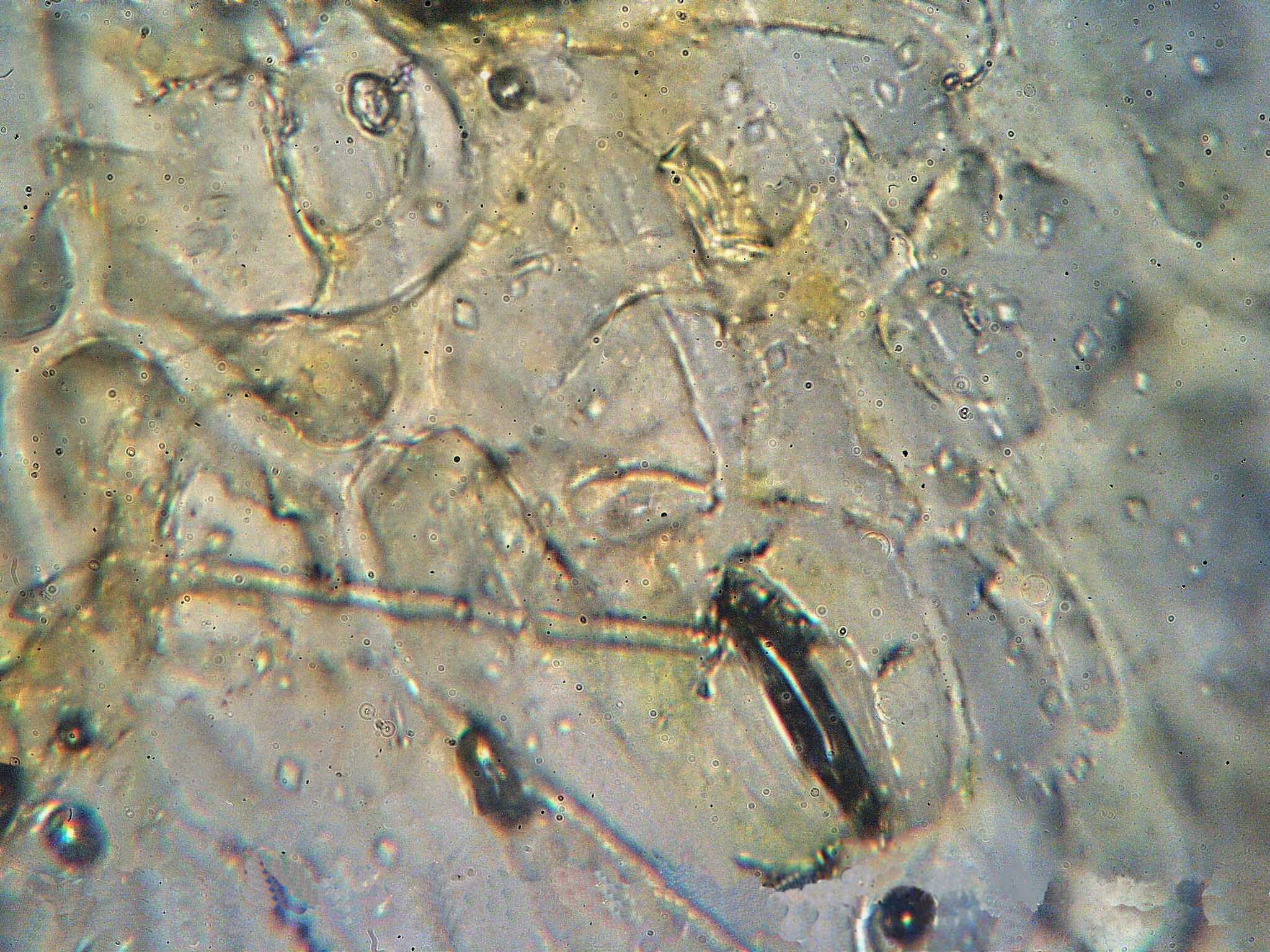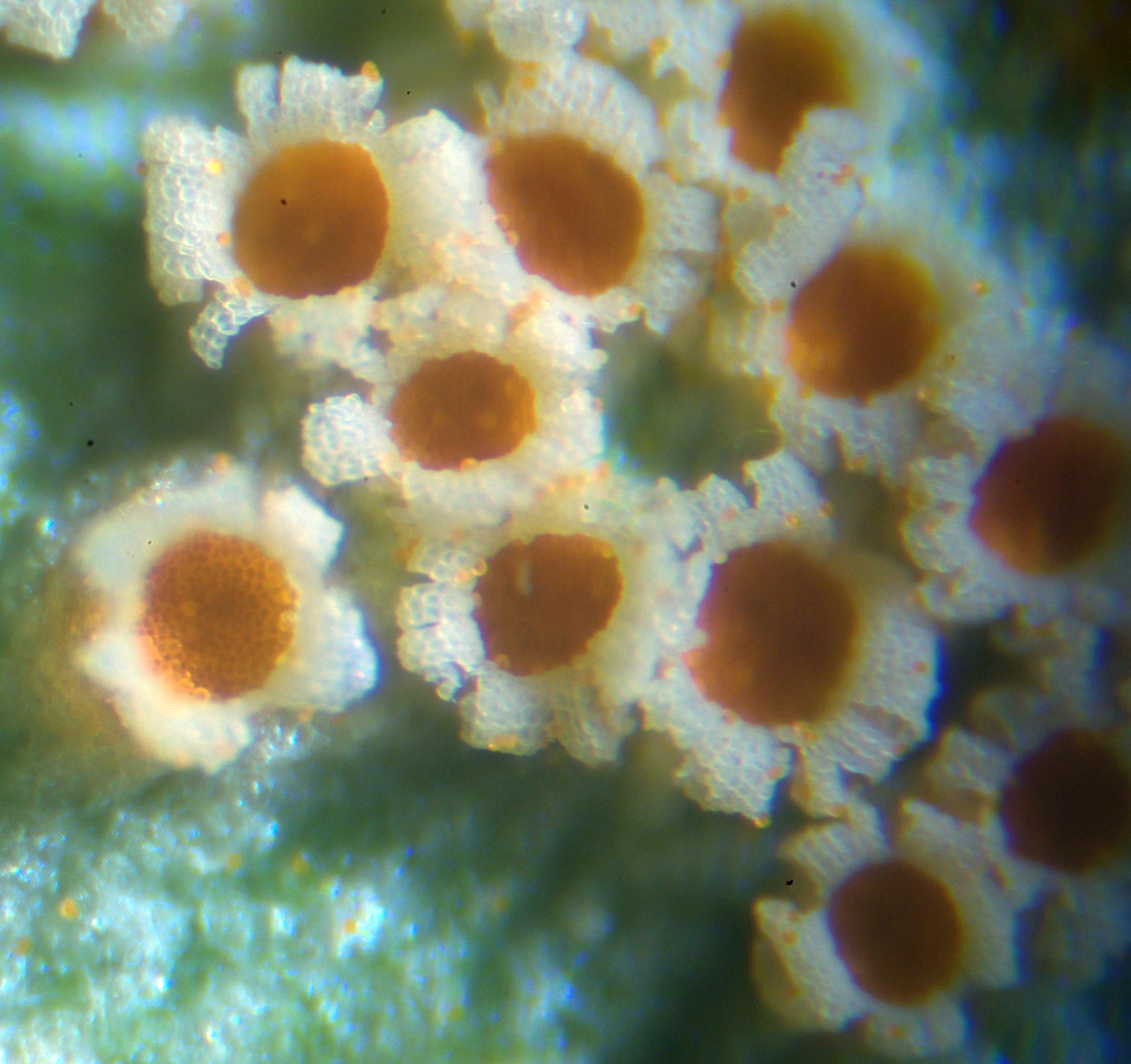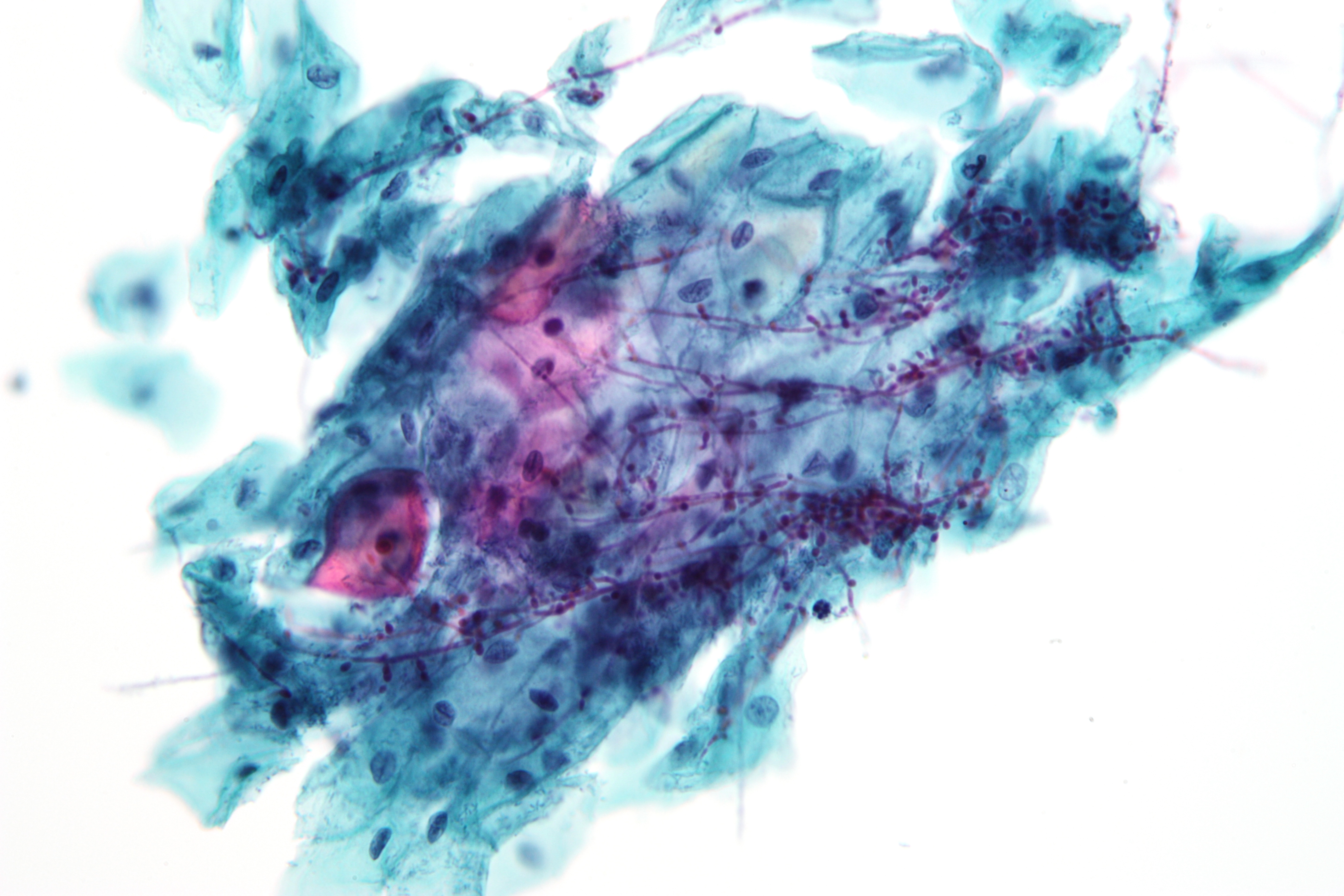|
Melampsora Amygdalinae
''Melampsora amygdalinae'' is a fungal pathogen and part of the division Basidiomycota. It is known as a rust fungus that is host specific. ''M. amygdalinae'' commonly infects willows of the genus ''Salix''. This fungus was first discovered in 1909 by Heinrich Klebahn who was a professor of soil biology in Hamburg. Neimi at el. explain how the pathogen occurs throughout the whole distribution of the host, and the small natural populations are an area of interest. This rust fungus is annual (non systemic) and autoecious, which references the fungus spending its entire life in a single host. Hosts and symptoms Willows are a highly susceptible host that this pathogen targets. Fungicides are not usually used for its protection, as the result is not effective. The fungicides needed for this rust fungus would also affect the surrounding environment. “Several studies reported very low differentiation among samples of fungal pathogens of agricultural crops or forestry trees from diffe ... [...More Info...] [...Related Items...] OR: [Wikipedia] [Google] [Baidu] |
Heinrich Klebahn
Heinrich Klebahn (20 February 1859, Bremen – 5 October 1942, Hamburg) was a German mycologist and phytopathologist. In 1884 he obtained his PhD from the University of Jena, afterwards working as a schoolteacher in Bremen (1885–1894) and Hamburg (1894-1899). From 1905 onward, he was associated with the botanical gardens at Hamburg. From 1921 to 1934 he was an honorary professor and lecturer of cryptogamy and soil biology at the ''Institut für Allgemeine Botanik'' in Hamburg.BHL Taxonomic literature : a selective guide to botanical publications Honours In 1895 Ernst Lemmermann named the algae genus ''Klebahniella'' in his honor. Then in 1906 he was commemorated with the mycological genus ''Klebahnia'' by Joseph Charles Arthur, which is a synonym of ''Uromyces'' , 1833. In 1939, W.Kirschstein pub ...[...More Info...] [...Related Items...] OR: [Wikipedia] [Google] [Baidu] |
Spermogonium
{{Short pages monitor ... [...More Info...] [...Related Items...] OR: [Wikipedia] [Google] [Baidu] |
Fungi Of Europe
A fungus (plural, : fungi or funguses) is any member of the group of Eukaryote, eukaryotic organisms that includes microorganisms such as yeasts and Mold (fungus), molds, as well as the more familiar mushrooms. These organisms are classified as a Kingdom (biology), kingdom, separately from the other eukaryotic kingdoms, which by one traditional classification include Plantae, Animalia, Protozoa, and Chromista. A characteristic that places fungi in a different kingdom from plants, bacteria, and some protists is chitin in their cell walls. Fungi, like animals, are heterotrophs; they acquire their food by absorbing dissolved molecules, typically by secreting digestive enzymes into their environment. Fungi do not photosynthesize. Growth is their means of motility, mobility, except for spores (a few of which are flagellated), which may travel through the air or water. Fungi are the principal decomposers in ecological systems. These and other differences place fungi in a single gro ... [...More Info...] [...Related Items...] OR: [Wikipedia] [Google] [Baidu] |
Fungi Described In 1909
A fungus ( : fungi or funguses) is any member of the group of eukaryotic organisms that includes microorganisms such as yeasts and molds, as well as the more familiar mushrooms. These organisms are classified as a kingdom, separately from the other eukaryotic kingdoms, which by one traditional classification include Plantae, Animalia, Protozoa, and Chromista. A characteristic that places fungi in a different kingdom from plants, bacteria, and some protists is chitin in their cell walls. Fungi, like animals, are heterotrophs; they acquire their food by absorbing dissolved molecules, typically by secreting digestive enzymes into their environment. Fungi do not photosynthesize. Growth is their means of mobility, except for spores (a few of which are flagellated), which may travel through the air or water. Fungi are the principal decomposers in ecological systems. These and other differences place fungi in a single group of related organisms, named the ''Eumycota'' (''true fu ... [...More Info...] [...Related Items...] OR: [Wikipedia] [Google] [Baidu] |
Fungal Tree Pathogens And Diseases
A fungus ( : fungi or funguses) is any member of the group of eukaryotic organisms that includes microorganisms such as yeasts and molds, as well as the more familiar mushrooms. These organisms are classified as a kingdom, separately from the other eukaryotic kingdoms, which by one traditional classification include Plantae, Animalia, Protozoa, and Chromista. A characteristic that places fungi in a different kingdom from plants, bacteria, and some protists is chitin in their cell walls. Fungi, like animals, are heterotrophs; they acquire their food by absorbing dissolved molecules, typically by secreting digestive enzymes into their environment. Fungi do not photosynthesize. Growth is their means of mobility, except for spores (a few of which are flagellated), which may travel through the air or water. Fungi are the principal decomposers in ecological systems. These and other differences place fungi in a single group of related organisms, named the ''Eumycota'' (''true fungi' ... [...More Info...] [...Related Items...] OR: [Wikipedia] [Google] [Baidu] |
Pucciniales
Rusts are plant diseases caused by pathogenic fungi of the order Pucciniales (previously known as Uredinales). An estimated 168 rust genera and approximately 7,000 species, more than half of which belong to the genus ''Puccinia'', are currently accepted. Rust fungi are highly specialized plant pathogens with several unique features. Taken as a group, rust fungi are diverse and affect many kinds of plants. However, each species has a very narrow range of hosts and cannot be transmitted to non-host plants. In addition, most rust fungi cannot be grown easily in pure culture. A single species of rust fungi may be able to infect two different plant hosts in different stages of its life cycle, and may produce up to five morphologically and cytologically distinct spore-producing structures viz., spermogonia, aecia, uredinia, telia, and basidia in successive stages of reproduction. Each spore type is very host specific, and can typically infect only one kind of plant. Rust fungi are o ... [...More Info...] [...Related Items...] OR: [Wikipedia] [Google] [Baidu] |
Pathogen
In biology, a pathogen ( el, πάθος, "suffering", "passion" and , "producer of") in the oldest and broadest sense, is any organism or agent that can produce disease. A pathogen may also be referred to as an infectious agent, or simply a germ. The term ''pathogen'' came into use in the 1880s. Typically, the term ''pathogen'' is used to describe an ''infectious'' microorganism or agent, such as a virus, bacterium, protozoan, prion, viroid, or fungus. Small animals, such as helminths and insects, can also cause or transmit disease. However, these animals are usually referred to as parasites rather than pathogens. The scientific study of microscopic organisms, including microscopic pathogenic organisms, is called microbiology, while parasitology refers to the scientific study of parasites and the organisms that host them. There are several pathways through which pathogens can invade a host. The principal pathways have different episodic time frames, but soil has the longest ... [...More Info...] [...Related Items...] OR: [Wikipedia] [Google] [Baidu] |
Obligate Parasite
An obligate parasite or holoparasite is a parasitic organism that cannot complete its life-cycle without exploiting a suitable host. If an obligate parasite cannot obtain a host it will fail to reproduce. This is opposed to a facultative parasite, which can act as a parasite but does not rely on its host to continue its life-cycle. Obligate parasites have evolved a variety of parasitic strategies to exploit their hosts. Holoparasites and some hemiparasites are obligate. It is advantageous for the parasite to preserve the health of their host when this is compatible with their nutritional and reproductive requirements, except when the death of the host is necessary for transmission.Combes, C. (1997) Fitness of Parasites: Pathology and Selection ''International Journal for Parasitology'' 27 (1): 1–10. Species Obligate parasitism is exhibited in a range of organisms, with examples in viruses, bacteria, fungi, plants, and animals.Balashov, Yu.S. (2011) Parasitism and Ecological Paras ... [...More Info...] [...Related Items...] OR: [Wikipedia] [Google] [Baidu] |
Aeciospore
Aeciospores are one of several different types of spores formed by Rusts. They each have two nuclei and are typically seen in chain-like formations in the aecium. References Fungal morphology and anatomy {{mycology-stub ... [...More Info...] [...Related Items...] OR: [Wikipedia] [Google] [Baidu] |
Aecium
An aecium (plural aecia) is a specialised reproductive structure found in some plant pathogenic rust fungi that produce aeciospores. Aecia may also be referred to as "cluster cups". The term aecidium (plural aecidia) is used interchangeably but is not preferred. In some rust fungi such as ''Phragmidium'', aecia lack an outer wall structure (a peridium The peridium is the protective layer that encloses a mass of spores in fungi. This outer covering is a distinctive feature of gasteroid fungi. Description Depending on the species, the peridium may vary from being paper-thin to thick and rubber ...) but instead produce a diffuse aecium called a caeoma.''Fungi''. Lilian E Hawker, 1966, Hutchinson University Library In some species of rust fungi with a life cycle including two different host plants, the binucleate spores produced in the aecia cannot infect the current plant host, but must infect a different plant species. References Fungal morphology and anatomy Reproduc ... [...More Info...] [...Related Items...] OR: [Wikipedia] [Google] [Baidu] |
Basidiospore
A basidiospore is a reproductive spore produced by Basidiomycete fungi, a grouping that includes mushrooms, shelf fungi, rusts, and smuts. Basidiospores typically each contain one haploid nucleus that is the product of meiosis, and they are produced by specialized fungal cells called basidia. Typically, four basidiospores develop on appendages from each basidium, of which two are of one strain and the other two of its opposite strain. In gills under a cap of one common species, there exist millions of basidia. Some gilled mushrooms in the order Agaricales have the ability to release billions of spores. The puffball fungus ''Calvatia gigantea'' has been calculated to produce about five trillion basidiospores. Most basidiospores are forcibly discharged, and are thus considered ballistospores. These spores serve as the main air dispersal units for the fungi. The spores are released during periods of high humidity and generally have a night-time or pre-dawn peak concentration in the ... [...More Info...] [...Related Items...] OR: [Wikipedia] [Google] [Baidu] |
Fungal Pathogen
Pathogenic fungi are fungi that cause disease in humans or other organisms. Approximately 300 fungi are known to be pathogenic to humans. Markedly more fungi are known to be pathogenic to plant life than those of the animal kingdom. The study of fungi pathogenic to humans is called "medical mycology". Although fungi are eukaryotic, many pathogenic fungi are microorganisms. The study of fungi and other organisms pathogenic to plants is called plant pathology. ''Candida'' ''Candida'' species cause infections in individuals with deficient immune systems. Th1-type cell-mediated immunity (CMI) is required for clearance of a fungal infection. ''Candida albicans'' is a kind of diploid yeast that commonly occurs among the human gut microflora. ''C. albicans'' is an opportunistic pathogen in humans. Abnormal over-growth of this fungus can occur, particularly in immunocompromised individuals. ''C. albicans'' has a parasexual cycle that appears to be stimulated by environmental stress. ... [...More Info...] [...Related Items...] OR: [Wikipedia] [Google] [Baidu] |






